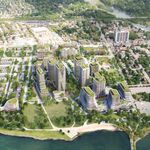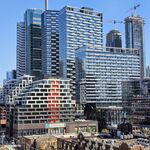innsertnamehere
Superstar
Why is this development occurring in Cambridge and Bradford a bad thing again? These "further afield" settlements also need employment so people can work closer to home, and the infrastructure also may either already exist (Cambridge) or be planned to accommodate future intensification of existing residential zones (Bradford). The only place this is true in the GTA West Corridor is Bolton.
Instead of trying to force more industrial development around the fringes of the Greenbelt, we ought to see how we can better use existing land. (Maybe 60-year-old office buildings with sprawling parking lots isn't the best thing to have right next to the 404...)
Because those trucks now drive from Cambridge to Toronto to do deliveries instead of Vaughan to Toronto.
All it's doing is shifting the industrial uses from Vaughan to Cambridge, where it's further from customers and where it has a morel limited pool of employees.
All it's doing is pushing development further out, increasing transportation costs and emissions.
The answer to the issue of environmental protection is not in infrastructure - it's in land use. To reduce impacts you need to look at how to increase the compactness of commercial development. Amazon is building a 5 million square foot, 5 storey industrial warehouse in Ottawa right now for example - that's far more land efficient than what is industry standard. Trying to limit sprawl by not providing the infrastructure is not going to work, it's just going to push demand where it is permitted. you have to fix the land use permissions and demands.
The issue too is that Toronto has some of the highest growth pressures in the western world. Looking at cities in Europe with marginal population growth is not as easy of a comparison - the demand for space is just nowhere close to Toronto. A city that adds 100k+ people a year is naturally going to need more land - you have to try to minimize that need, but you aren't rationally going to get around that need. And you have to plan properly for that need, including properly servicing it with infrastructure.
Last edited:





